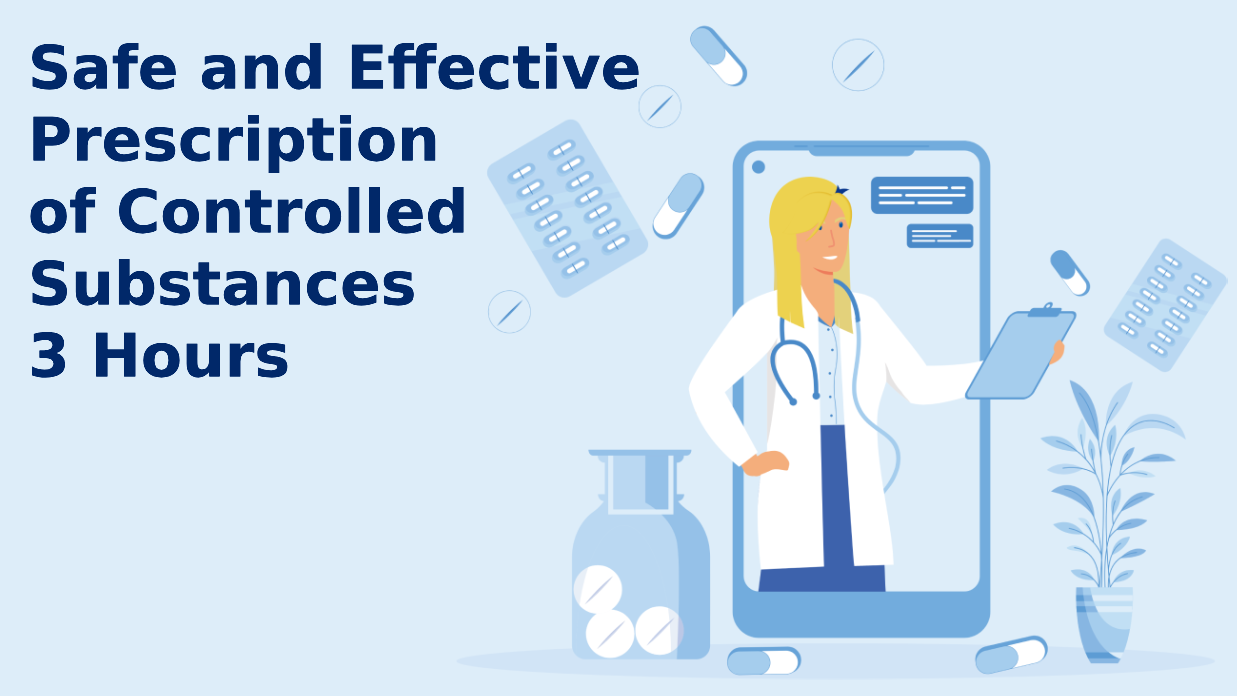
Safe and Effective Prescription of Controlled Substances
Tracking # 20-1275529
Category:
Click the board buttons to see the category.
Program Objectives:
-
Define Key Concepts:
- Define and explain the importance of Prescription Drug Monitoring Programs (PDMPs) and their role in managing prescription drug misuse.
-
Understand Prescription Drug Misuse:
- Identify the common patterns and signs of prescription drug misuse, including opioid use disorder, and their implications for public health.
-
Recognize Opioid Use Disorder:
- Understand the risk factors for developing opioid use disorder and the impact it has on pain management strategies.
-
Evaluate Safe Prescribing Practices:
- Analyze and apply evidence-based guidelines for safe prescribing of opioids and controlled substances.
-
Implement Non-Pharmacological Interventions:
- Identify and apply non-pharmacological pain management strategies, including physical therapy, cognitive behavioral therapy, and alternative therapies.
-
Utilize PDMP Data:
- Demonstrate the ability to access and interpret PDMP data to inform clinical decision-making and monitor patients for potential misuse.
-
Educate Patients on Medication Use:
- Develop effective patient education strategies that promote understanding of medications, their risks, and adherence to prescribed regimens.
-
Monitor Patients Effectively:
- Design and implement monitoring plans for patients prescribed opioids to assess treatment effectiveness and detect any signs of misuse.
-
Collaborate Across Disciplines:
- Foster collaboration among healthcare providers, including pharmacists, mental health professionals, and pain specialists, to enhance patient care.
-
Address Legal and Ethical Considerations:
- Understand the legal and ethical implications of prescribing controlled substances and the responsibilities of healthcare providers.
- Analyze case studies related to opioid use disorder and pain management to identify best practices and areas for improvement.
-
Develop Tapering Plans:
- Formulate appropriate tapering plans for patients transitioning off opioid medications, ensuring minimal withdrawal symptoms and patient comfort.
-
Promote Community Awareness:
- Advocate for community awareness programs that educate the public about the risks of prescription drug misuse and the importance of responsible medication use.
-
Continuously Improve Clinical Skills:
- Commit to ongoing education and training in pain management and substance use disorder treatment to enhance clinical skills and improve patient outcomes.
Course Overview:
Safe and Effective Prescription of Controlled Substances is designed for healthcare professionals to enhance their understanding of managing prescription drugs, particularly opioids. The course addresses the risks of prescription drug misuse and opioid use disorder, focusing on evidence-based safe prescribing practices.
Participants will learn the role of Prescription Drug Monitoring Programs (PDMPs), explore non-pharmacological pain management alternatives, and develop effective patient education strategies. Emphasizing a multidisciplinary approach, the course equips professionals to assess patient needs, monitor treatment efficacy, and create tapering plans for opioid therapy. By the end, participants will be prepared to make informed prescribing decisions that prioritize patient safety and responsible medication use.
Participants will learn the role of Prescription Drug Monitoring Programs (PDMPs), explore non-pharmacological pain management alternatives, and develop effective patient education strategies. Emphasizing a multidisciplinary approach, the course equips professionals to assess patient needs, monitor treatment efficacy, and create tapering plans for opioid therapy. By the end, participants will be prepared to make informed prescribing decisions that prioritize patient safety and responsible medication use.
$12.00
3 Hours